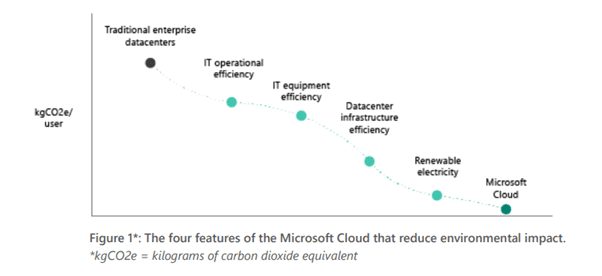The earth is heating up, and as the days go by, pressure is being put on the energy industry. The explanation is simple: almost half of all greenhouse gas (GHG) emissions worldwide are directly or indirectly attributable to the energy sector. Today, the environmental impact of businesses in every industry is closely examined by investors, regulators, and consumers.
For instance, BlackRock, the largest fund manager in the world, rejected 55 board members from businesses in 2020 who didn’t act on climate change. This fund manager turned down nearly five times as many applications this year, including one from a significant O&G company. Additionally, an O&G company was recently forced by a Netherlands court to reduce its emissions more drastically and quickly than anticipated. And in some areas, having a license to operate is contingent upon achieving considerable emissions reductions.
Reducing carbon emissions is becoming more widely recognized as a necessity than a want. The goal of the energy industry is to reduce emissions by half by 2030 and reach net zero by 2050 to prevent climate change’s worst consequences. To achieve its sustainability goals, the energy sector is investing in new technological innovations and digital solutions, including lowering energy consumption and carbon emissions using renewable energy sources like solar, wind, hydro, tidal, geothermal, and biomass.
Can the cloud be the tool that helps the energy sector reach its net-zero carbon goal?
According to a recent Accenture survey, cloud computing can significantly reduce businesses’ carbon emissions, ranging from 30% to 90% for each user. Moving to the public cloud can significantly reduce carbon emissions, saving 5.9% of all IT emissions, or roughly 60 million tonnes of CO2 globally annually, the equivalent of removing 22 million automobiles from the road.
Four ways cloud computing reduces carbon footprints:
- Cloud data centers conserve energy at their most basic level by achieving very high virtualization ratios, often on newer, more energy-efficient equipment used in on-premises setups.
- By relying on renewable energy sources like wind, solar, and hydro instead of fossil fuels, most large-scale cloud data centers are sustainable and beneficial for the environment.
- To reduce significant losses caused by the transmission of electrical energy over long distances, public cloud data centers are often situated closer to the facilities that supply them with power.
- Because of their superior hardware configuration, cloud computing data centers consume less energy to run their cooling and backup power systems. These data centers are created with efficient energy use in mind and are scaled for maximum utilization.
The cloud that embodies environmental responsibility!
Depending on the precise comparison, Microsoft Cloud has an energy efficiency advantage over traditional enterprise data centers of between 22 and 93 percent. The Microsoft Cloud is between 72 and 98 percent more carbon efficient when their renewable energy purchases are considered.
Four essential Microsoft Cloud capabilities are responsible for these carbon footprint savings:
- IT operational efficiency,
- IT equipment efficiency,
- Data center infrastructure efficiency,
- Renewable electricity.

Microsoft for Sustainability
Microsoft’s Cloud for Sustainability is a collection of ESG capabilities across its cloud portfolio, including Office 365 applications like Excel and products and services from partners.
According to Elisabeth Brinton, Microsoft’s corporate vice president of sustainability, Microsoft’s Sustainability Manager software is a foundational tool for helping users gain control over their Scope 1, 2, and 3 emissions. Customers may record, monitor, analyze, and report their emissions in almost real-time, create and manage sustainability goals, and automate data collection by centralizing heterogeneous data into a uniform format.
Using Microsoft’s Emissions Impact Dashboard for Azure, a Power BI tool, customers can track, report, and lower the carbon emissions connected to using the Azure cloud. Customers may drill down into Scope 1, 2, and 3 emissions by month, service, and data-center area using its dashboard. They can also add workloads that haven’t been transferred to Azure to receive estimates of the emissions reductions associated.
Click here to learn more about Microsoft’s capabilities for helping energy companies create sustainable business practices that will enable them to reach their net-zero carbon emission objective.
Microsoft’s Azure File Migration Program has made data migration easier to Azure by sponsoring the usage of Data Dynamics’ StorageX. The Azure File Migration Program allows companies to migrate applications and workloads with large numbers of files, unstructured data, and object storage data into Azure for FREE. Click here to know more. Or contact us at solutions@datdyn.com I (713)-491-4298.






